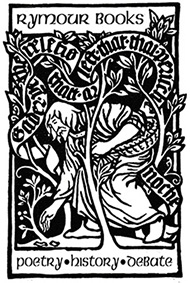 |
 |

 |
 |
|
 |
|
|
Postage to the United States and Europe has increased significantly. Please email info@rymour.com if you would like to order from outside the United Kingdom
|
JESSIE MARION KING Jessie Marion King (20 March 1875–3 August 1949) was a Scottish artist, designer and illustrator especially known for her illustrated books. She was one of the artists known as the Glasgow Girls. Little known at the time of her death, her work is now widely admired and celebrated. THE LITTLE WHITE TOWN OF NEVER WEARY by Jessie M King was published in 1917. It has been out of copyright since 2018. This new edition with a comprehensive introduction by Ian Spring is released to coincide with the 150th anniversary of her birth on 20th March 2025. The Little White Town consists of a description of a small town, clearly based on Kirkcudbright where King lived at the time, in the form of a sort of fairy tale for children. Although King had illustrated and designed many books, she was not accustomed to writing the text by herself and this proved somewhat daunting for her. Her primary idea had been to include with the book cardboard cutouts of buildings in the town which could be constructed and decorated by children — and she worked on this with her daughter Merle, who was eight at the time. The date of release of the book is significant as simple toys for children were necessitated by the ravages of war. It was also a time, of course, when many children had suffered from the loss of their fathers. The book was also intended as a tribute to Kirkcudbright, where King had happily settled with her husband and daughter. The ‘Little White Town’, is in some ways idyllic, but not perfect, and it can be seen as an example of a small town that demonstrates to a child the various functions of a typical community. Although the book cannot be regarded as part of a wider Scottish fictional tradition per se, it could be regarded as an antidote to the ‘anti-kailyard’ school of fiction, typified by, for example, The House with the Green Shutters and Gillespie, that portrays Scottish small town life as insular, gossipy, treacherous and far from idyllic.
|
![]()